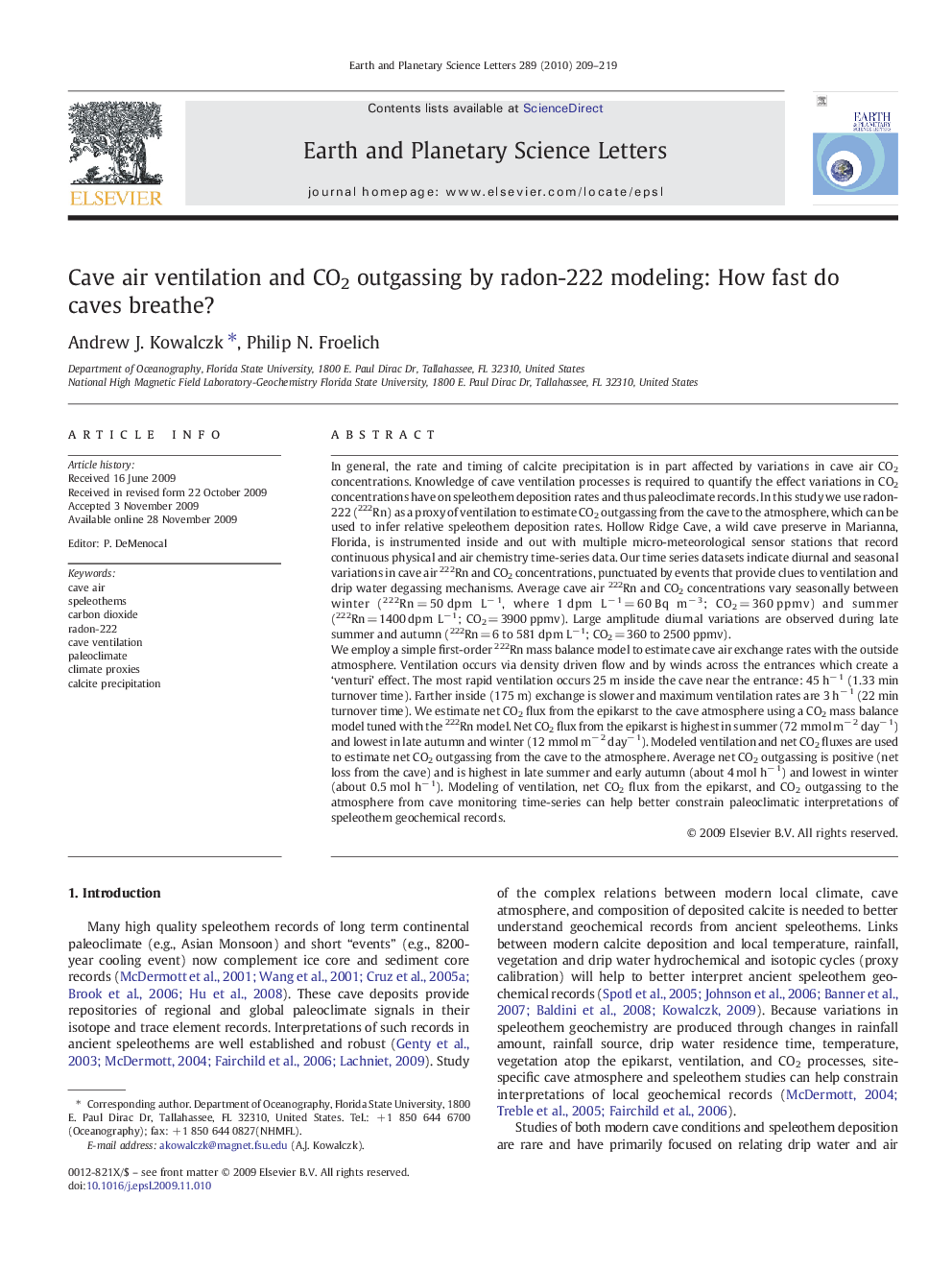| کد مقاله | کد نشریه | سال انتشار | مقاله انگلیسی | نسخه تمام متن |
|---|---|---|---|---|
| 4678851 | 1634861 | 2010 | 11 صفحه PDF | دانلود رایگان |

In general, the rate and timing of calcite precipitation is in part affected by variations in cave air CO2 concentrations. Knowledge of cave ventilation processes is required to quantify the effect variations in CO2 concentrations have on speleothem deposition rates and thus paleoclimate records. In this study we use radon-222 (222Rn) as a proxy of ventilation to estimate CO2 outgassing from the cave to the atmosphere, which can be used to infer relative speleothem deposition rates. Hollow Ridge Cave, a wild cave preserve in Marianna, Florida, is instrumented inside and out with multiple micro-meteorological sensor stations that record continuous physical and air chemistry time-series data. Our time series datasets indicate diurnal and seasonal variations in cave air 222Rn and CO2 concentrations, punctuated by events that provide clues to ventilation and drip water degassing mechanisms. Average cave air 222Rn and CO2 concentrations vary seasonally between winter (222Rn = 50 dpm L− 1, where 1 dpm L− 1 = 60 Bq m− 3; CO2 = 360 ppmv) and summer (222Rn = 1400 dpm L− 1; CO2 = 3900 ppmv). Large amplitude diurnal variations are observed during late summer and autumn (222Rn = 6 to 581 dpm L− 1; CO2 = 360 to 2500 ppmv).We employ a simple first-order 222Rn mass balance model to estimate cave air exchange rates with the outside atmosphere. Ventilation occurs via density driven flow and by winds across the entrances which create a ‘venturi’ effect. The most rapid ventilation occurs 25 m inside the cave near the entrance: 45 h− 1 (1.33 min turnover time). Farther inside (175 m) exchange is slower and maximum ventilation rates are 3 h− 1 (22 min turnover time). We estimate net CO2 flux from the epikarst to the cave atmosphere using a CO2 mass balance model tuned with the 222Rn model. Net CO2 flux from the epikarst is highest in summer (72 mmol m− 2 day− 1) and lowest in late autumn and winter (12 mmol m− 2 day− 1). Modeled ventilation and net CO2 fluxes are used to estimate net CO2 outgassing from the cave to the atmosphere. Average net CO2 outgassing is positive (net loss from the cave) and is highest in late summer and early autumn (about 4 mol h− 1) and lowest in winter (about 0.5 mol h− 1). Modeling of ventilation, net CO2 flux from the epikarst, and CO2 outgassing to the atmosphere from cave monitoring time-series can help better constrain paleoclimatic interpretations of speleothem geochemical records.
Journal: Earth and Planetary Science Letters - Volume 289, Issues 1–2, 15 January 2010, Pages 209–219